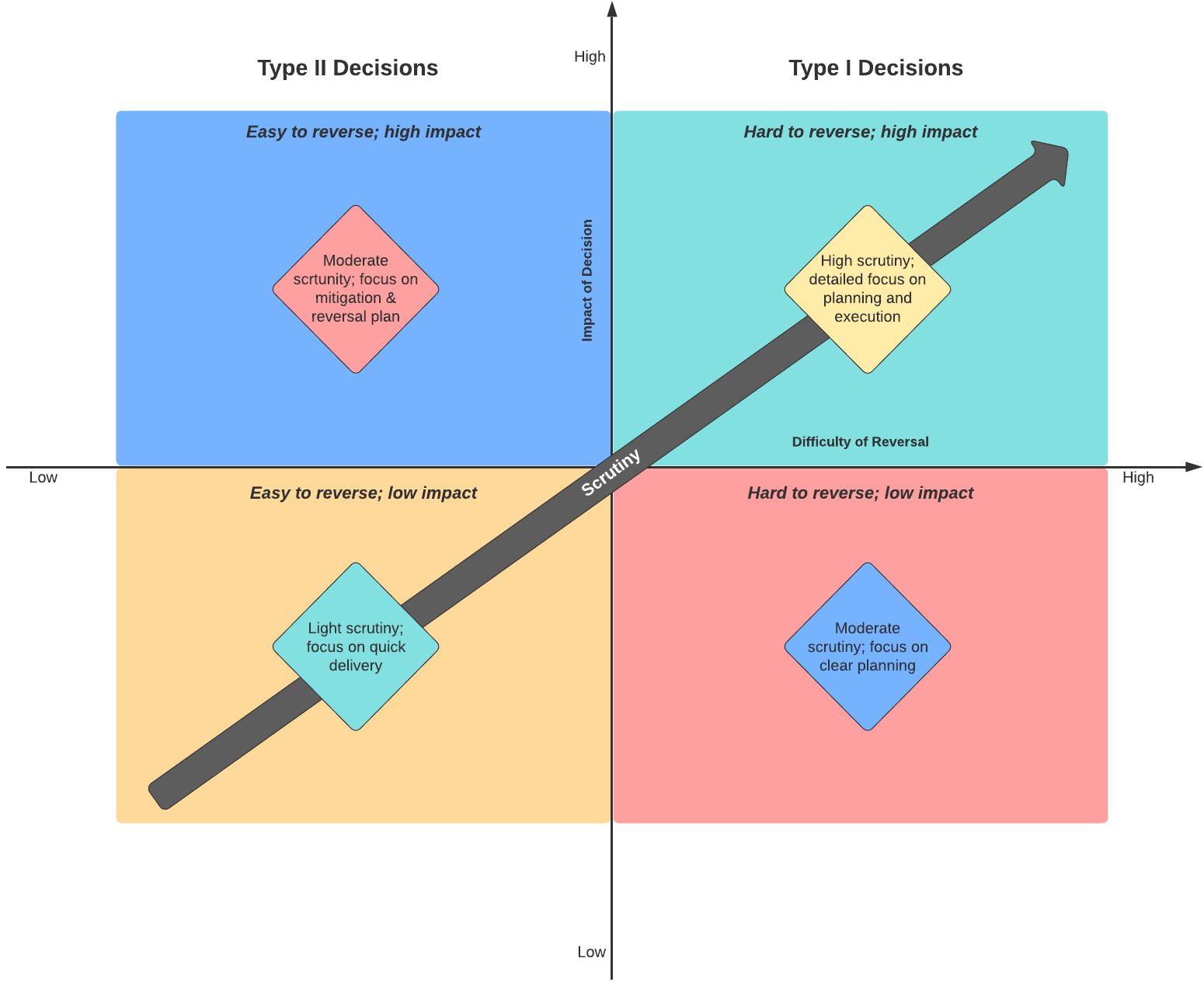I first wrote this piece in Late 2021 at a previous company. I've shared it with every team I have worked with since. Decision making can be a consistent source of confusion and as a result, inefficiency. Having a clear framework for understanding how decisions can be made is an effective tool for a high-performance team.
Decision Making
We make decisions every day. Sometimes individually, sometimes in a group. Not all decisions are equal in impact, complexity, or importance. Sometimes there's a clear decision-maker, other times there is not. It is crucial that a team continually makes well communicated and reasoned decisions to achieve our goals.
Discussing vs. Deciding
Discussing refers to airing all relevant information around a decision, possible options, mitigations, and progressions. The discussion comes first and can feature a broader audience. Sometimes discussion and decision meetings are the same; however, it can be effective to make a distinction, or, at the least, verbalize what state a decision is in (e.g. "we're discussing here, let's make the decision by next Tuesday at our next meeting" or "I'll be setting up a 15 minute follow up meeting tomorrow to make the final decision.").
In our remote world, time in high-bandwidth video meetings is harder to come by. To adjust to this reality we can make a simple rule: async discussions, sync decisions. Much of the discussion process can be made asynchronous—this means leveraging chat tools (Slack, Discord), documentation tools (Google Docs, Notion, Lucidchart), and a team's other tooling to share ideas and solicit feedback. Ad-hoc meetings for discussion are also encouraged, though it's important to make sure everyone involved in the decision making process is working with the same information to maintain fairness and ensure a high-quality decision. Regular team syncs are a great place to bring discussions that are moving towards decisions but could use asynchronous form.
Forcing vs. Facilitating
It is crucial to identity who is responsible for a decision. Being responsible for a decision – as a 'lead' or 'owner' does not always mean being the person to have the final say or having the right to force a decision. Often, it means facilitating the decision-making process: getting the right people to provide input, making sure all options and viewpoints are heard, fostering convergence towards a decision, and making sure a decision is made on time.
Regardless of the process the most important part of decision making is actually making the decision and doing so in a way that it is clear to all involved that a decision has in fact been made and the reasoning why. There are times where it is necessary to make a decision without consensus. This should be rare. In these cases, the decision-maker should step up and clarify that a decision is being made and provided an explanation why, making sure the why is understood by the team. If possible, the decision-maker should also outline a timeline to re-evaluate the decision and mitigate if necessary.
Classifying a Decision
In conversations where a decision is trying to be made it can be helpful to step back and see if the parties involved are classifying a decision similarly. It's vital to get on the same page here—sharing rationale and information to understand what decision is being discussed, and the context around it. The process of getting on the same page on the type of decision being made often leads to a decision being made more efficiently.
The diagram below is a tool to help do this classification. Use it as follows:
- Recognize that a decision can use further classification
- Discuss and agree on the classification of the decision
- Commit to the decision making strategy
- Continue with the decision-making process until a decision is made

Have Fun Deciding
Everyone on a well-run team plays a part in making good decisions. After all, you're hired for what you know and what you can do all of which relies upon decision making competence. If anything about a decision or its process is not clear be the one to speak up, seek clarification, and assist your team in moving towards a productive outcome.
